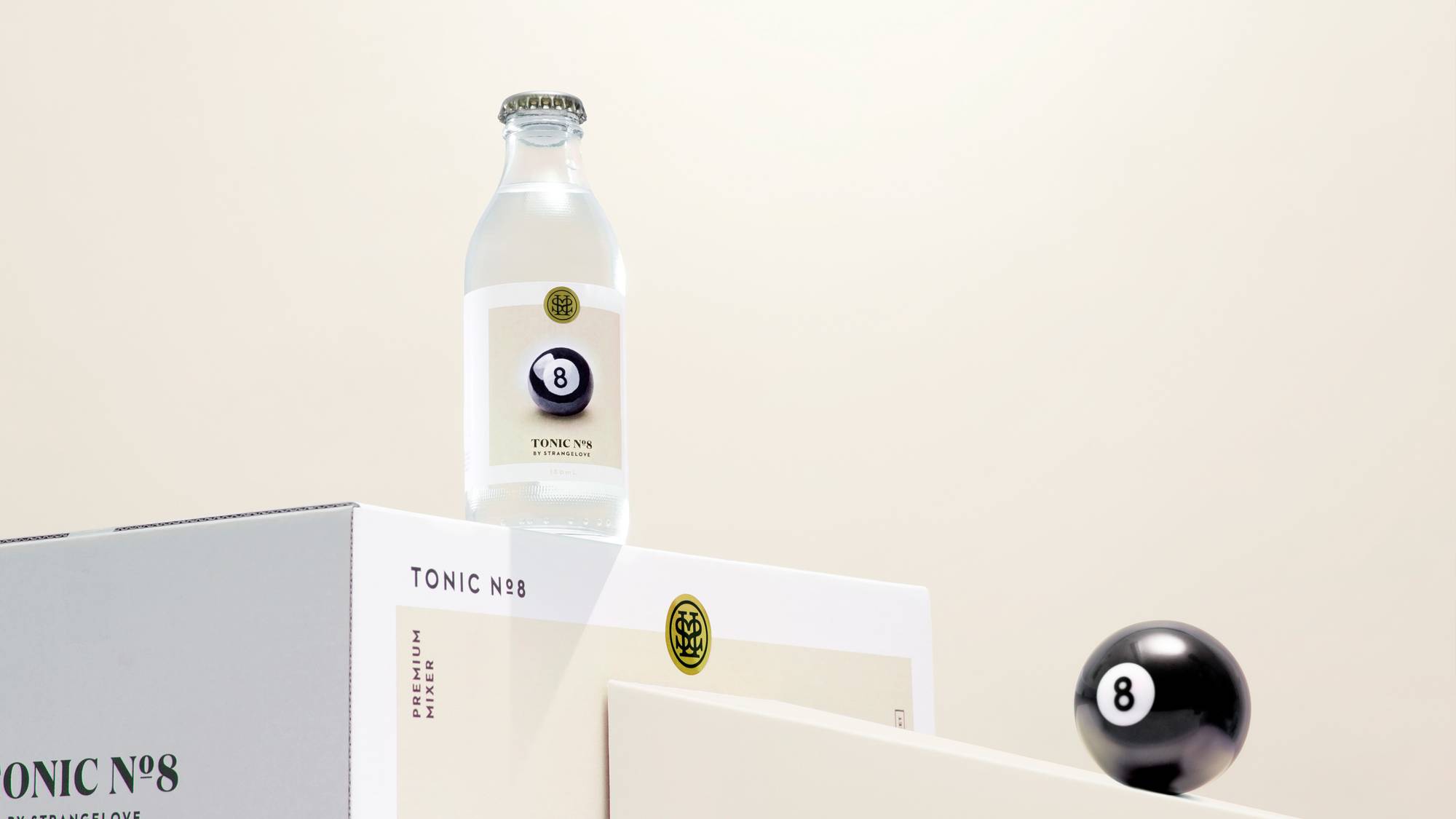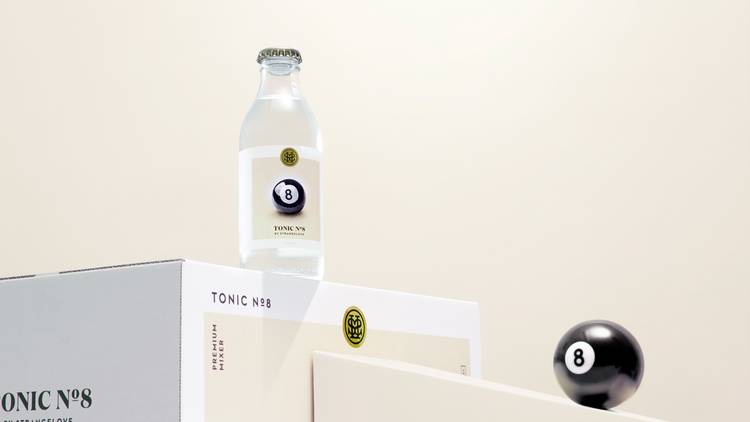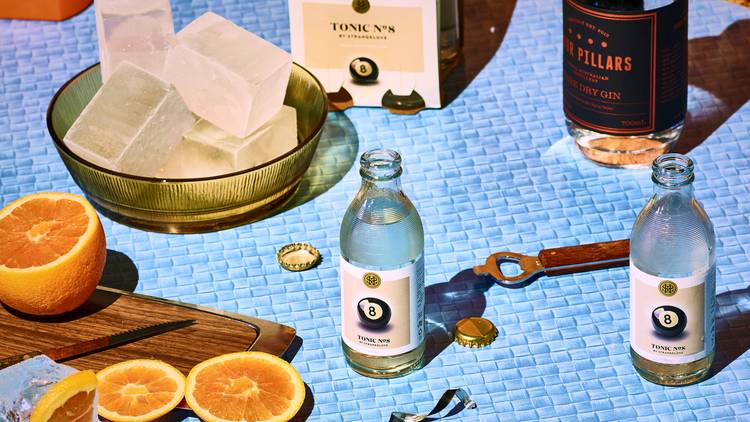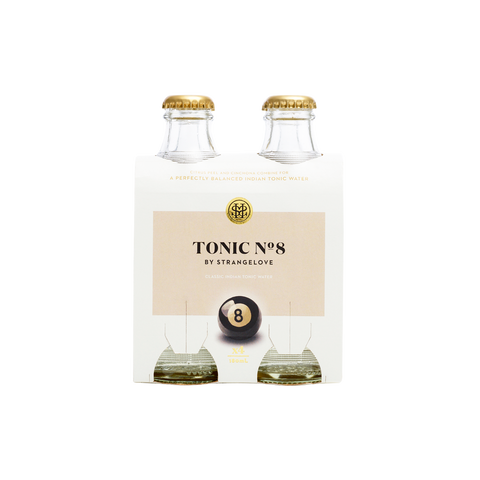Indian Tonic Water
Indian tonic in its most basic form, is a carbonated drink that contains sugar, flavours and quinine. More premium versions, such as StrangeLove's punchy Tonic No.8 also contain complex and diverse botanicals that are added to the tonic, making it better suited to specific styles of gin.
Contrary to it's name, Indian Tonic water was, in fact, created by British army officers stationed in India as a malaria fighting elixir which (accidentally) also came with the added benefit of tasting really really good mixed with the alcohol rations soldiers were assigned to make 'getting your leg blown to smithereens and sawed off with a pocket knife a bit more fun'.
The first commercialised Indian Tonic water was produced in 1868, when it was marketed as a refreshing mixed gin and tonic cocktail for spectators of horse racing. And the rest, as they say, is history.
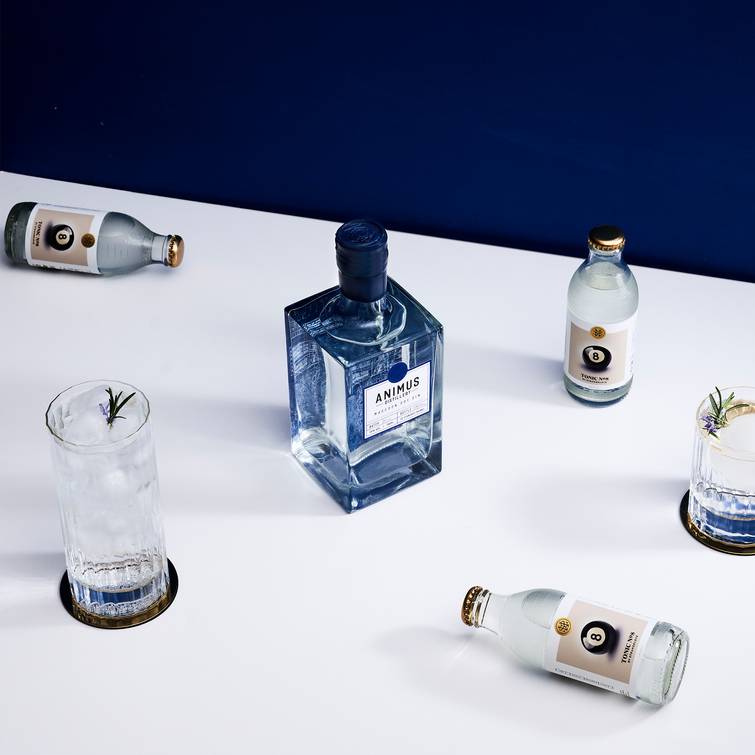

Indian tonic vs tonic
This one is a trick question, as there is actually no difference between 'Indian tonic' and plain ol' 'tonic'. Although many brands throughout the ages have adapted traditional Indian tonic water into many weird and wonderful variations by adding diverse botanicals, citrus and juniper berries to further compliment the gin they accompany.
StrangeLove currently offer (in their own opinion) way too many tonic waters to choose from, with an obscenely pretentious range of premium options when it comes to choosing a flavour profile to suit your own personal preference or to best compliment the craft gin you re-mortgaged your house to buy. A traditional Indian Tonic will give you that familiar hard hitting complex, bitter profile you expect from a G&T - whereas variations of Indian tonic such as StrangeLove's Coastal tonic with foraged shoreside botanicals & a lower quinine content for a softer bitterness profile, will produce a wildly different finished product.
When it comes to G&T's, beauty is in the eye of the drinker. If you are looking for a traditional, dry G&T, go for an Indian. If you are feeling adventurous or simply aren't a huge fan of that intense bitter finish - play around with different gin distillations and tonic pairs to figure out your very own G&T groove.
Tonic water ingredients
To classify one's carbonated beverage as a 'tonic' it must contain these ingredients three: sugar, quinine and bubbles. Whatever comes after that is up to the producer, and with the influx of new-wave gins, followed an influx of tonics to match.
Cheaper, commercialised tonics contain a synthetic version of quinine, that results in that harsh, sometimes unpalatable bitter finish. Which is then attempted to be counteracted with a tonne of sugar (many mainstream tonics contain more sugar than a traditional full sugar soda). This is probably why when you first jimmied opened your parents liquor cabinet and mixed some gin with 99c tonic water, you spat it out in disgust and swore off this evil concoction, which could only be tolerated by grandparents who's taste buds were soiled by years of nicotine addiction.
More premium tonic variations use a quinine extract from the cinchona bark in which it originates from. Using a natural extract results in a more enjoyable, sustained bitterness, plus the addition of ingredients such as citrus peels, juniper berries, native botanicals and sea salt - produce a far superior mixing partner. This also alleviates the need to flavour with obscene amounts of sugar.
Discover StrangeLove's premium, dry (only 7g sugar/100ml) and versatile traditional Indian tonic water - Tonic no.8 - containing a robust blend of Guatemalan cinchona extract, bitter orange, lemon peel and a pinch of juniper, here.
